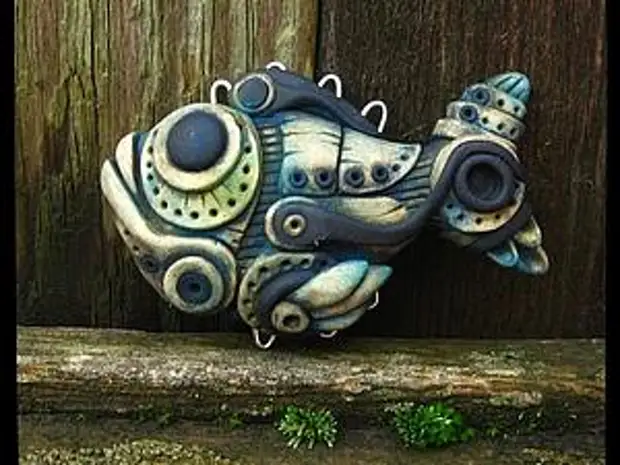
Today I will show how the decoration is created from the polymer clay in a very unusual style - biomechanics.
Biomechanics appeared as a direction relatively recently, in the eighties of the last century. Its characteristic feature, how can I understand already from the name, is a combination of living with non-resident - mechanical. Creatures in which polymer flesh and mechanics are bizarrely connected: built into the gear body, screws, mechanisms, microcircuits turn media in robots, cyborgs.
So, we will need:
1. Polymer clay (any color that you would like to take the basis).
2. Tools - the simplest, usually I use a scalpel in the modeling, a pair of knitting spokes of different sizes, needle, toothpicks, synthetic brushes, 4-2 rooms.
We smear a piece of polymer of the desired volume, from heat of the hands it becomes softer, militant. Give a piece of fish body shape. Since the gap between the torso and the tail is rather thin and is the place to be vulnerable, brittle, insert a metal pin into it, it will make the product stronger, create some framework.
When the basis is ready, we begin to bring the entourage, stylizing fish under biomechanical.
Give the texture from the lines in the base of the head and tail. Delightened subtly rolling the reservoir and model the trim from it. Our lines remain in the intervals between the trim.
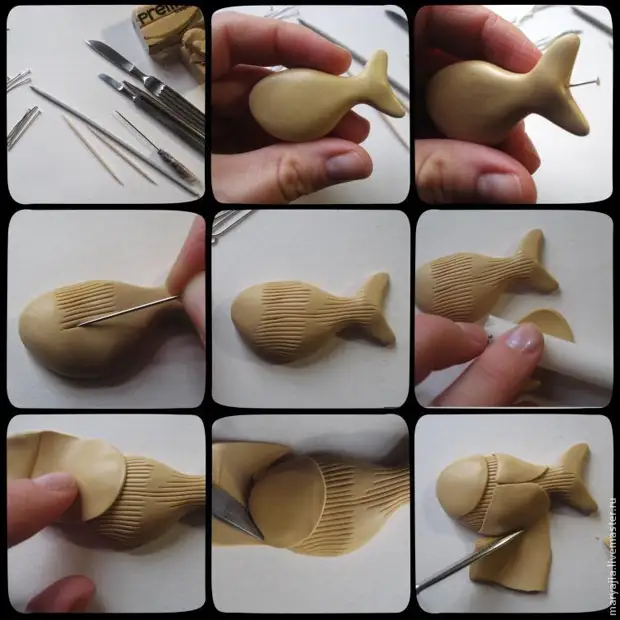
Create a different type of elements: patchwork, riveting, wire holes, in some places.
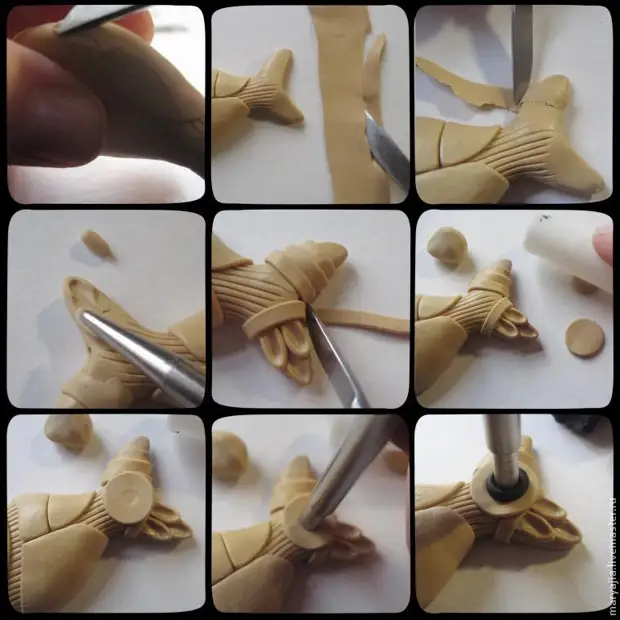
We simulate the lower jaw, eye-eyed, located on an oval or round patch. The upper and lower fins make from bent pins, the upper fin is usually more; It also scratches the various elements from the polymer.
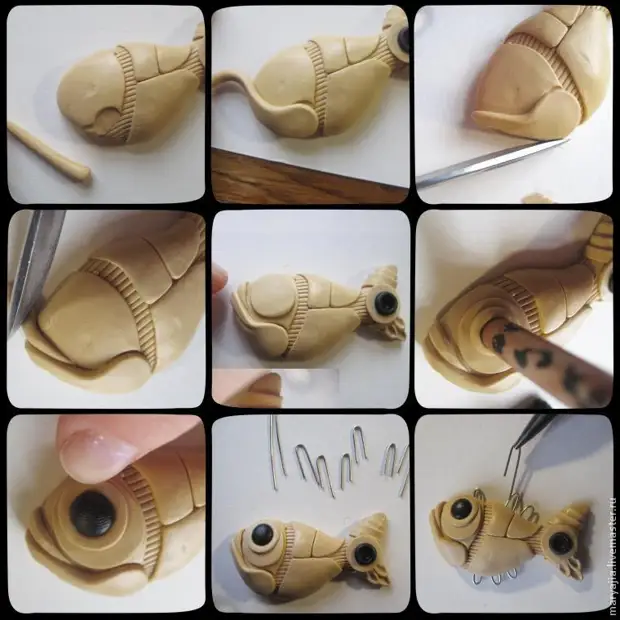
An interesting biomechanical element comes out of a flattened elongated harness passing through the body of the product.
The fins of biomechanical fish also comes out of the similarity of the hatch, is formed by three shiny "feathers".
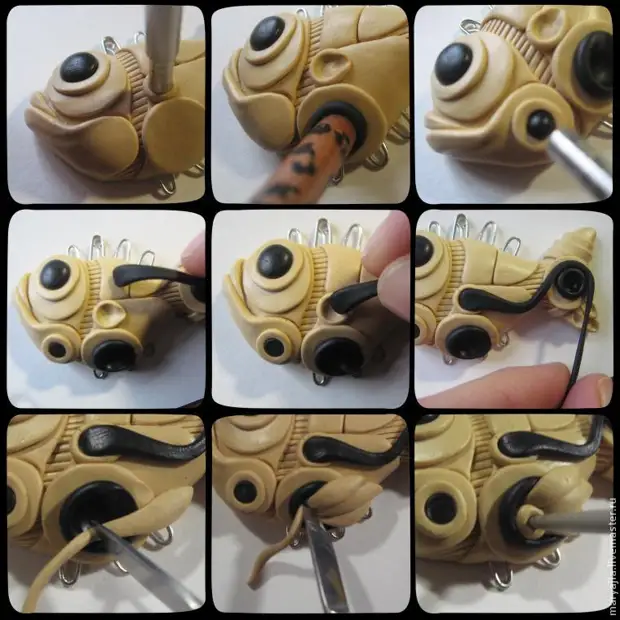
Next, the imitation of rivets: I make a chick, in which I insert small polymer balls by replacing them, pushing them in the center of toothpick. It turns out a small neat riveting. Also, the toothpick along the edge is sainted with riveting holes, which creates the effect of parts stripped to the body of the fish.
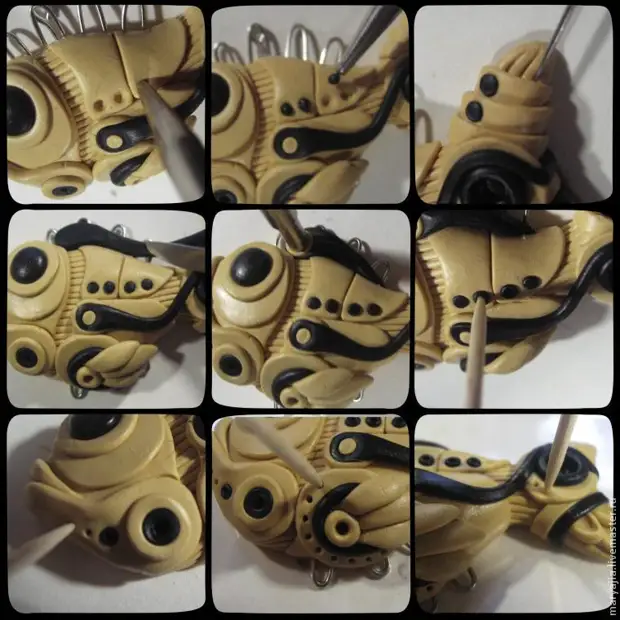
In some places, the needle of the crack and the Kotka on the body, later they will give a more finished type of fish, some old, will remove smoothness, ideality.
And - the most tasty for me - painting! We rub the pastel - on emery paper or coming down the blade, as comfortable. We take a brush, thin, and put pastel in the groove. It is advisable to apply not one color, diversify the gamut of the shades, it will give the work of the liveliness, will make it more interesting.
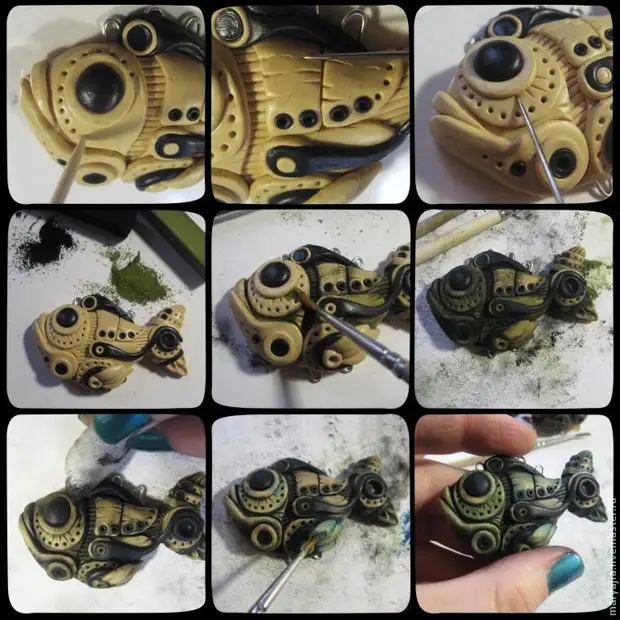
Next, we wipe out the damp napkin protruding parts of the product, light (neatly, since the soft plastic can be easily deformed with a slight movement). After clarification, you can again take over the brush and walk around the product, in some places to add a couple of bright color spots.
Firing at a temperature indicated on the packaging of your polymer, applying varnish (optional) and the product is ready!
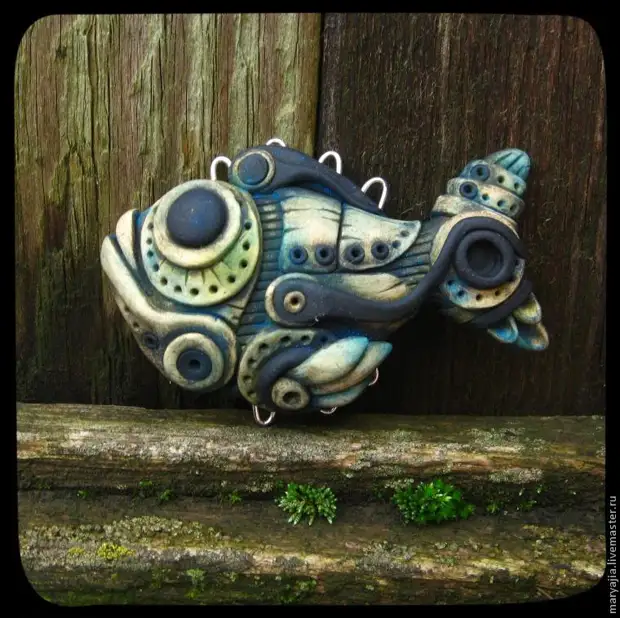
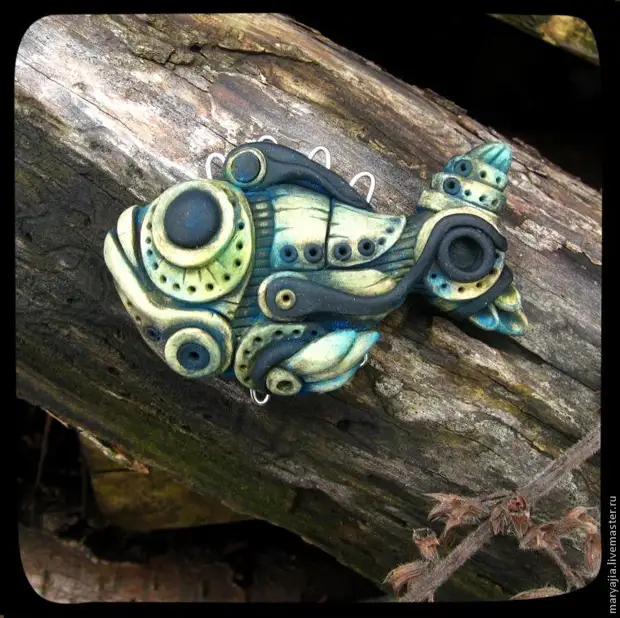
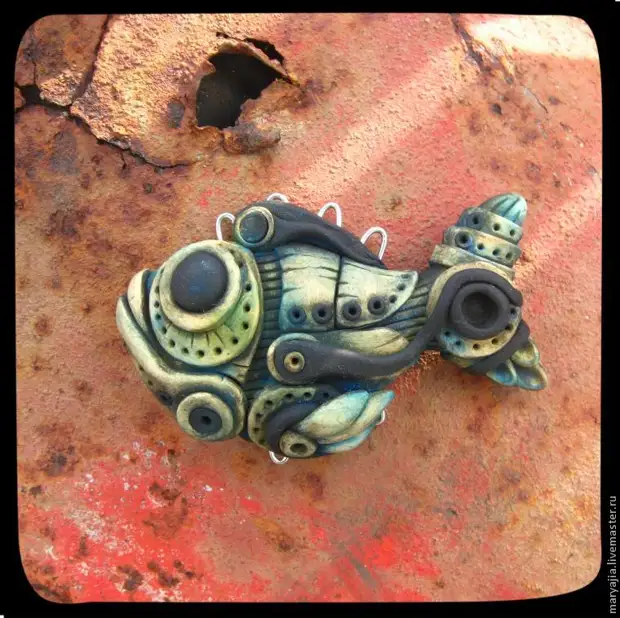
I wish you good luck and creative success!
